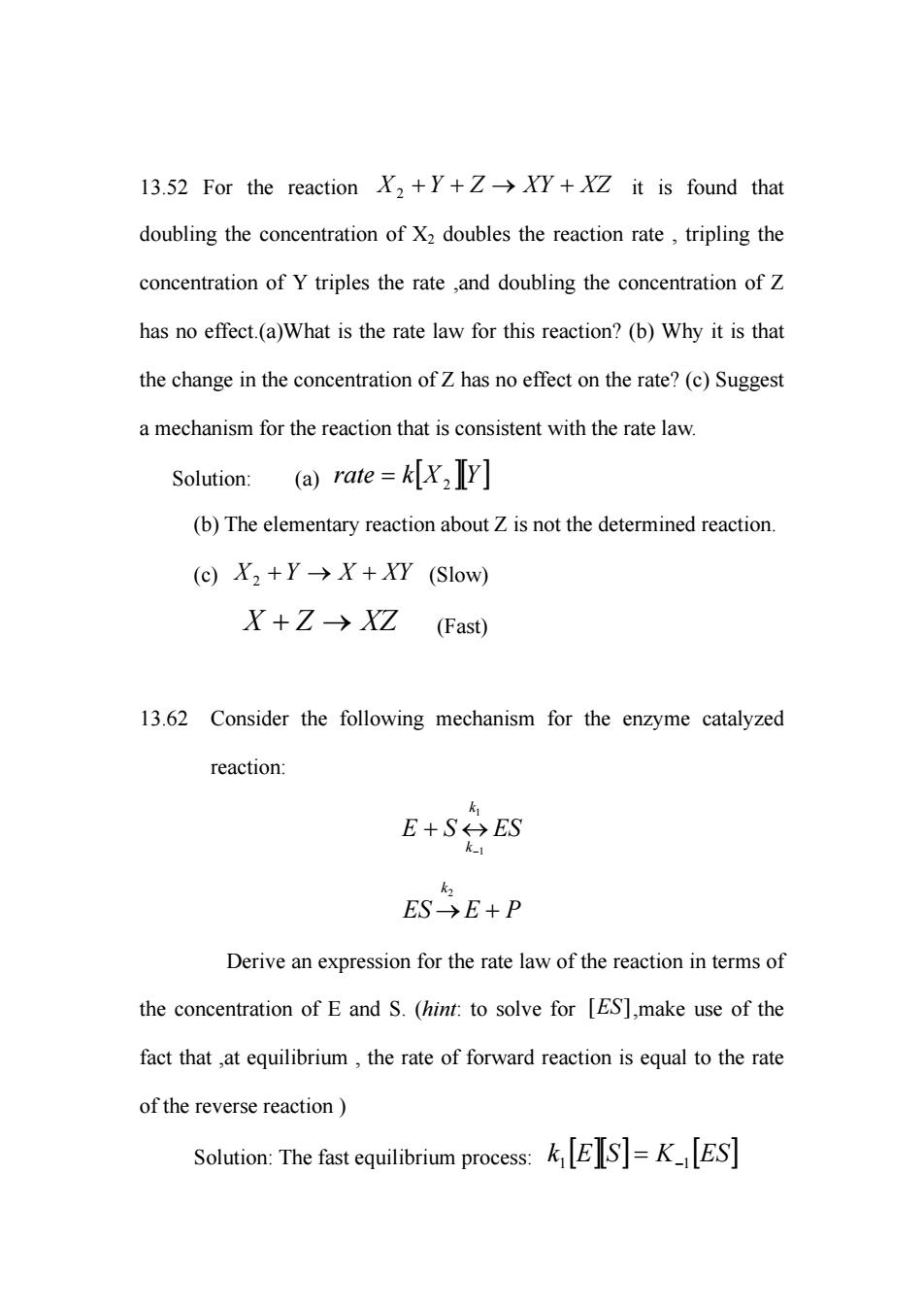正在加载图片...

13.52 For the reaction2++Z+it is found that doubling the concentration of X2 doubles the reaction rate,tripling the concentration of Y triples the rate ,and doubling the concentration of Z has no effect.(a)What is the rate law for this reaction?(b)Why it is that the change in the concentration ofZ has no effect on the rate?(c)Suggest a mechanism for the reaction that is consistent with the rate law Solution:(a)rate=k[X2IY] (b)The elementary reaction about Z is not the determined reaction. (c)X2+Y>X+XY (Slow) X+Z→XZ(Fast) 13.62 Consider the following mechanism for the enzyme catalyzed reaction: E+S分ES ES>E+P Derive an expression for the rate law of the reaction in terms of the concentration of E and S.(hint:to solve for [ES],make use of the fact that,at equilibrium,the rate of forward reaction is equal to the rate of the reverse reaction) Solution:The fast equilibrium process:k]=KES] 13.52 For the reaction 2 + + → + XZXYZYX it is found that doubling the concentration of X2 doubles the reaction rate , tripling the concentration of Y triples the rate ,and doubling the concentration of Z has no effect.(a)What is the rate law for this reaction? (b) Why it is that the change in the concentration of Z has no effect on the rate? (c) Suggest a mechanism for the reaction that is consistent with the rate law. [ ][YXkrate ] Solution: (a) = 2 (b) The elementary reaction about Z is not the determined reaction. (c) +→+ XYXYX (Slow) 2 + → XZZX (Fast) 13.62 Consider the following mechanism for the enzyme catalyzed reaction: ESSE k k 1 −1 ↔+ PEES k +→ 2 Derive an expression for the rate law of the reaction in terms of the concentration of E and S. (hint: to solve for ,make use of the fact that ,at equilibrium , the rate of forward reaction is equal to the rate of the reverse reaction ) ES][ [ ][ ] [ESKSEk1 −1 Solution: The fast equilibrium process: = ]